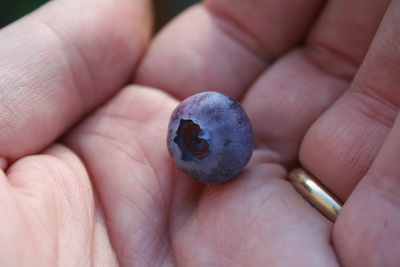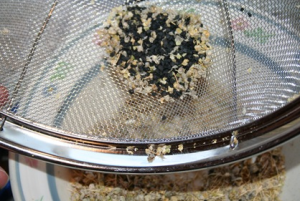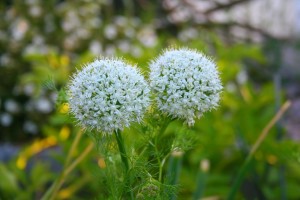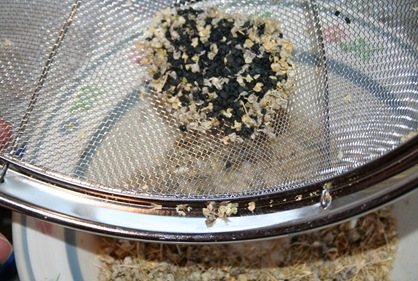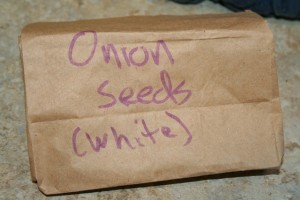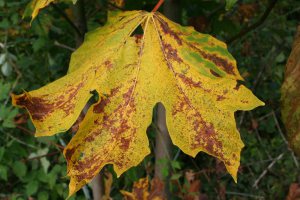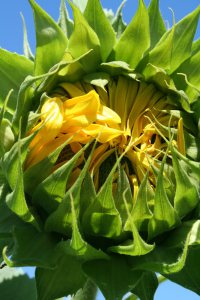Growing blueberries
14.5 years ago blueberry, cheap
If it were up to me every part of my landscaping would be edible. Though my homeowners association may disagree with me but blueberry bushes looks just as nice as any ornamental plant/bush when you visit the nursery with the obvious bonus of free food.
When selecting a blueberry bush, unless you are very patient spend about $10 a plant and get some more established ones (about 1/2 inch stem) You can get the two for $10 plants from your local Home Depot but you won’t be eating blueberries for a couple years. With the larger plants you should pinch off the blossoms to get better growth for the first couple years but I opt to getting my reward now instead of later and enjoy the handful of berries the young plants can produce.
When it comes to plant selection there are a large number of species to choose from with varying fruit size and harvest timing. I would recommend getting varieties that have varying maturity dates so you can enjoy those blueberries for a longer period of time. When I got my first two plants I went with Toro and Berkeley. The Berkeley is a very popular bush given it produces average size berries great for muffins/pancakes/cereal or the occasional snack with a mid-late harvest. The Toro on the other hand produces large (almost grape size) berries which are great for jams and snacks though bit of a mouthful for muffins. If you are curious of other varieties here is a great resource.
I have heard differing opinions on whether you need to have different species to successfully produce fruit after a little research I found this article which explains that blueberries are capable of pollinating with a single species, though studies have shown that having more varieties can produce larger and earlier fruits. So if you have a favorite variety you can go crazy with the single plant though a little diversity seems to always be a good thing.
When it comes to pest control the biggest pest is birds. You can control them by laying some netting on the plants, though in my personal opinion that just gets in the way of me getting my snacks so I opt for the lazy approach and just plant more plants and share with “neighbors”. Worse case I end up with a backyard with some bushes that look much nicer than my current evergreens, and I always can take up bird watching.
One of the most important parts to being successful with your little blueberry plants is soil preparation. The plants need to have an acidic soil and their roots like to remain moist, but not drowning in water. Given my area has an abundance of clay in my backyard, I naturally do not have either of these requirements. To give the plants a head start I dug a 1 foot wide/deep hole and filled it with peat moss and mixed with a few handfuls of compost. Not only will this retain water well, but the peat moss is also naturally acidic and will be a nice haven for a large family of worms in the next few years to add some awesome natural fertilizer (worm castings) Last I purchased I box of organic blueberry fertilizer which provides the primary and trace minerals as well as help keep the acidity of the soil up. I simply followed the directions on the box and watered the plants when there was a couple of days without rain.
Now some of you might be thinking, “hey it is fall why are you talking about growing blueberries” Well this is the “Cheap Vegetable Gardener, right now is a great time to visit your local nursery to pick up some of their “old overgrown” blueberry plants at bargain prices which you can plant now and enjoy some delicious berries next spring/summer.
Tags: birds, cheap, compost, led, organic vegetables, outdoor plants, vegetables, worms
How to grow seeds in your garden
14.8 years ago cheap, seed saving, seeds
Because of a strange heat wave we had in June, I seem to be growing more seeds than vegetables this year. Now as they say when life gives you lemons, make lemonade. In that spirit I am planning on increasing the number of plants I will allow to completely go to seed this year.
I have always saved cilantro seeds, the first time it was almost an accident my daughter liked the pretty white flowers and after neglecting my garden at the end of the summer I had perfectly dried cilantro seeds on the plant. Free and renewable supply of seeds, what could be better. If I don’t have you convinced here are some more reasons:
Cheap: You really can’t beat free. With the price of seeds increasing depending on the variety of seeds you grow this could save you a considerable amount of money per year.
Easy: The creation of seeds of seeds is a completely natural process that has been happening for millions of years. In many cases you can do practically nothing other than harvest the seeds before the birds do.
Natural selection: With a little attention you can hand select only your best plants to harvest seeds from. If the plant survived to produce seeds it has to be at least a little disease tolerant and if you intentionally pick plants that bolted early you can also establish your own slow bolting variety.
Limited availability: Even with all the resources on the internet your favorite seed company may not always carry your favorite varieties or in some cases just a few seeds might be hard to come by. If you play your cards right you may even be able to make a few bucks selling your rare seeds.
Seed Exchange: If you collect seeds you more than likely will get more seeds than you need for the next 2-3 years from a single plant. This is a great supply to use for local or mail seed exchanges. Not only are you supplying someone else with seeds they need but also adding seeds to your collection which you can harvest and repeat the process again.
Growing sprouts: If you are paying for seeds growing sprouts for some plant varieties can be pretty expensive…unless your seeds are free. This is a good healthy way to use up some of those extra seeds you can’t get rid of any other way.
This year I am planning on harvesting spinach, pea, carrot, and radish seeds (along with my previous onions and cilantro) so stay tuned for more details.
Tags: birds, cheap, cilantro, garden seeds, outdoor plants, vegetables
How to collect and save onion seeds from your garden
15.3 years ago onions, seed saving, seed storing
Last year I collected cilantro seeds and they were a great success in my garden that this past Spring I made a commitment to myself that I would try to collect more seeds this season. Though I wanted to get more I was able to collect seeds from my onions, jalapenos, and cilantro. The jalapeno seeds were pretty easy I set some seeds aside on a paper towel while making some salsa. After they appeared to be dry I threw them in a brown paper lunch bag.
For the onions once the florets (flower balls you see above) got real ugly and dry and I could see the black seeds emerging I placed them in a paper bag before the birds got to them. I then put the bag on top of our kitchen cabinets and forgot about them for couple months. Today I pulled the bag down and confirmed they definitely were dry. To separate the seeds from the pods I broke apart (which happens easily) and placed the contents into a metal strainer. I gently broken open any remaining pods and agitate the strainer. This causes the small black seeds to move to the bottom, allowing the pods to float to the top and forcing many of the stems to fall through.
I then skimmed off as many of the stems/pods as possible leaving and putting the seeds into a brown paper bag until I can get into town to buy some more manageably sized brown envelopes (recovering from Seattle snowstorm)
After a few minutes of work I now have hundreds of onions seeds which I probably only have use for couple dozen. Seed exchange anyone?
Tags: birds, cheap, cilantro, garden seeds, led, salsa garden, vegetables
Getting the garden ready for winter
15.5 years ago garden maintenance
The leaves are changing and falling the days are getting colder and I am personally coming to the end of my vegetable growing season. I do have a few post season activities before I completely call it a year.
Remove plants: Now my plants have lived a good life but now need to be removed. I mulch my lawn so I am always lacking greens for my compost bin so this is a good time to get some new materials. Most of my remaining plants are tomato, pumpkin, and cucumber plants which have some tough skins so I will chop them up with my lawnmower prior to add them to my modest bin. While you have your mower running this is a good time to let it keep running until it runs out of gas to avoid gumming up the engine when you fire it up next spring. This is also a good time to inspect and sharpen or replace the blade since if you are like me you will completely forget about this when you finally get around to mowing next spring.
Fertilize: If you only can fertilize one time throughout the year now is the time because turf grasses have the ability to store food during the winter months to allow a very quick rebound after the winter months. My primary concern is for my lawn which I am applying alfalfa pellets, since we have had some intense rains these past weeks they should break down quickly and not have the appearance of goose poo for too long. While applying I also allowed some to fall into by beds to help microbial activity and give my empty beds a head start for next spring. Be sure to avoid beds with and vegetation since you want to avoid any new growth with first hard freeze coming up.
Turning the soil: This can be a controversial activity since messing with the soil can inhibit microbial activity though turning the soil now can give you a head start next spring. My motivation is more on the lines if killing baby slugs (I know I am cruel) The slug activity in my garden was pretty minimal but I have concerns the few visitors may have decided to raise a family in my bed for next year. If I simply turn the first few inches of the soil I can expose the tiny slug eggs which birds will eat as a snack and any remaining will be destroyed during our first good frost. As an added benefit this will be a good time to catch up on my slacking in weeding during the last few weeks.
Taking care of your tools: Now is a good time to find those missing tools that may be hiding in your yard and garden. I have no idea why manufacturers choose to make these things green; almost like they want us to lose them to buy more ïŠ If you find any of your tools it is a good idea to put a light coating of oil on metal parts of your tools. You can also apply some Linseed oil to the wood portion of your tools.
Frosting on the top: At this point my garden is looking pretty good….even tempted to start planting though I will resist the urge. I have a plan to hold me over this winter but that will require its own post. After I have had a couple good frosts to kill off any slug eggs I will break open a couple of my bags of leaves and spread on a solid layer on top of my beds. Not only will this provide some food and temperature protection for the worms in my garden but whatever remains will be a great addition of organic matter for my garden.
Now with all this work I should be ready to start gardening way earlier than I should next spring…will I ever learn.
Tags: birds, cheap, compost, garden seeds, organic vegetables, outdoor plants, tomato plants, vegetables, worms
How to save sunflower seeds
15.7 years ago harvest, sunflowers
The trickiest part of harvesting sunflower seeds is timing. If you wait too long, the birds will let you know when you wake up to the head of the flower on the ground with seeds devoured. There are a couple of ways to get around this when the backs of your sunflowers begin to get yellow cover them with a paper bag or cheesecloth to inhibit the birds from stealing them. Given I probably would get a letter from my HOA if I did this in my backyard I opted to cut off the heads a few inches down and hang them upside down in my garage with a paper bag below to catch any loosening seeds. Every few days I run my hands across them if seeds start falling easily it is time to harvest. The best method I have found is using a painter’s roller screen used for 5 gallon buckets. I couple passes over this and the head is clean.
I am too lazy to roast and eat the seeds so I normally save a handful for next year’s planting and give the rest back to the birds over the fall/winter.
Tags: birds, cheap, garden seeds, outdoor plants, vegetables
My greenberry bushes
15.8 years ago blueberry
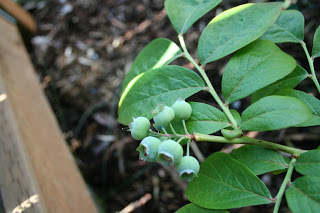
Well hopefully in a another week I will have some nice blueberries. Blueberries need to cross polinate so early this spring I bought a Berkeley and a Toro, being a first year plant I should have pinched off the blossoms and let the plant use its energy for growth versus fruiting. Being impatent and wanting to harvest the two dozen berries I should get this year (unless the birds beat me to them) I let nature take its course. I helped them out by adding some organic fertilizer specific for blueberries with provides nutrients but also help increase the acidicy of the soil which blueberries thrive in. I was also careful to water frequently but not enough the drown their shallow roots but at the same time not letting them dry out.
Tags: birds, organic vegetables, outdoor plants
